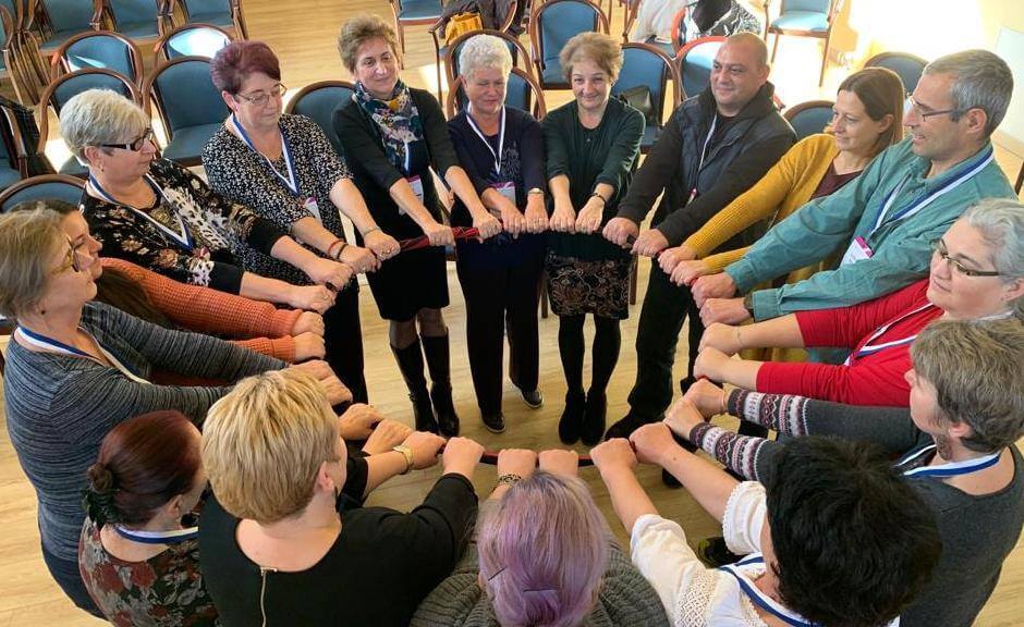I took part in a program focusing on awareness and prevention of domestic violence, organized by the UNOSZ and jointly sponsored by the Gábor Bethlen Fund and the ICUUW, November 29-December 1, 2019.
Why did I attend this seminar focusing on such a sensitive issue? Obviously, I have heard much about intimate partner violence. We all carry with us family patterns. I must admit that in my childhood I fought with those the same age as I. I slapped a boy when I was a university student, who dared grope me in a crowded bus. An angry person is capable of everything: slap, strike, scratch, bite, and even kill.
I knew a nice couple. The wife worked in a hospital, the husband at a construction firm. They had a daughter. They divorced, but no one knew why. Much later I learned that it was a case of domestic violence. It was taboo then, so it took long years for the truth to come out.
There are many aggressors who are highly educated, in management positions, and others who are less educated. Why do they end up perpetrating violence? Who is responsible? Who suffers more, the aggressor or the victim? What happens to the bystander who wants to help – who protects them? Are there laws in place and are they just? These are some of the questions that were whirling in me as I prepared for the program in Marosvásárhely. I had just retired, and I thought this training would give me a new goal: prevent violence around me and help those in need.
The program included presentations by mental health professionals and psychologists, and a panel discussion moderated by Gizella Nagy, former ICUUW member and coordinator of the ICUUW-UNOSZ joint Leadership School. One of the takeaways of the very varied presentations was that intimate partner violence is not one own’s business – and it is not a shame to ask for help. Experts acquainted us with the existing laws and the social network available to help victims of abuse. There are laws, but they are not perfect; and their implementation is often deficient.
One of the most often formulated questions was related to the protection of the bystander: who protects the teacher, family doctor, neighbor, etc. if they want to help the victim? At the individual level, this means reporting an incident of violence to police or an appropriate authority, or taking other action to intervene where it is safe to do so. At the organizational or community level, encouraging members to report incidents of violence and having clear policies in place for responding to specific incidents would be helpful. According to the law, if the victim is a minor, every professional (teacher, school psychologist) must report the incident to the child protection services.
The training concluded with the creation of an informational flyer to raise awareness as well as give helpful information, including the national domestic violence hotline.
